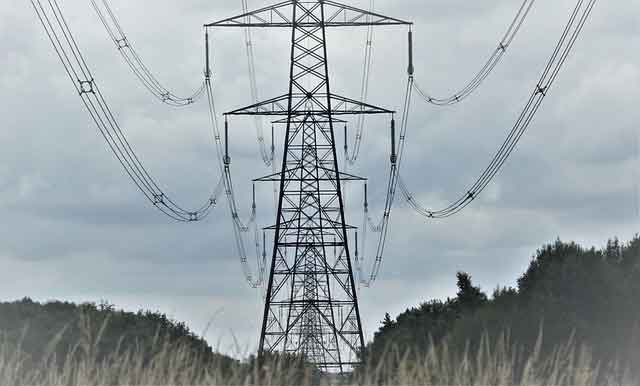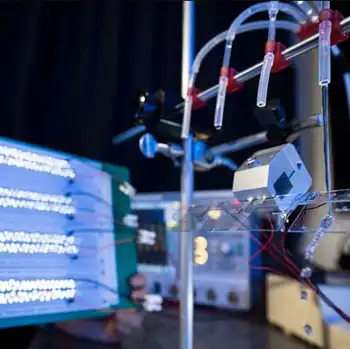Living off the grid for over a decade
By Toronto Star
Protective Relay Training - Basic
Our customized live online or in‑person group training can be delivered to your staff at your location.

- Live Online
- 12 hours Instructor-led
- Group Training Available
But there's nothing madcap about the house.
Drinking runoff water from their eavestroughs, recycling that water through their washing machines and toilets, collecting their human waste in a composter and relying on solar power to run their household appliances, for more than a decade the family has had one of the smallest carbon footprints in the city.
Though Paloheimo's decision to uproot his family and place them inside a science experiment-cum-urban home seemed eccentric in 1996, the self-taught inventor says he is now viewed more like an avant-garde environmentalist.
"People are starting to get the picture a bit more," he says.
"It seemed like last winter, in particular, with that warm January, there was a bit of a sea change, and Al Gore's movie came out and all of a sudden everybody started to feel that this kind of thing is a better idea."
A father of three, Paloheimo, 53, spends his days working on his inventions in his home office while his dog Ricki and cat Ribbon meander about his papers and creations. His wife, 47-year old Diana Potts, works as an administrator at St. Michael's Hospital. His eldest son studies graphic design at Georgian College in Barrie.
His daughters – Leslie, 10, and Alison, 13 – have both grown up in the Healthy House and have learned to conserve energy, turning off lights when they are not in the room and not wasting water, which they say tastes better in their home than the scented liquid that comes out of other people's taps.
Futuristic as their house may be, it's the quirkiness that makes it special for the girls.
"Our house looks kind of funny from the outside," Alison says of the solar panels hanging down from the roof.
"The floors are funny, too," Leslie adds, referring to the composite flooring made from concrete and blue-box materials – glass bottles, cans, etc.
Both of Paloheimo's daughters have had their school science classes visit the house on field trips, but neither feels she's living in a prolonged science experiment.
"We used to get up in the morning and look out the window to see a bus-load of people staring at the house. That would get kind of funny sometimes. But we're all normal in here, it's just an interesting house," Alison says.
Paloheimo built the Healthy House in 1996 as two semi-detached, four-storey 1,700 square foot units, from a winning design for an environmentally friendly house sponsored by Canada Mortgage and Housing Corp.
Standing on a 70-foot-by 22.5-foot lot that once held a laneway and a garage and with no connection to city water, the house, with its drooping solar-paneled roof and overgrown garden, stands out as an anomaly among red brick homes.
Paloheimo says the Healthy House cost about 12 per cent more to build than a traditional house of the same size, but with no expenses for water, sewage and gas, he figures he's already made that investment back.
Rain water is collected on the roof, directed into eaves and funnelled into a 25,000-litre cistern under the back patio. Water from the cistern is then filtered and used as drinking water and sent to the dishwasher. Following this initial use, the wastewater is collected, refiltered and redirected to the shower, washing machine and toilets.
Discarded water from the shower, washing machine and toilet ends up in the in-house sanitation system. Solids are trapped in a composter, where they're broken down by parasites, bugs, larvae and earthworms imported from the garden.
Wastewater is separated from the solids and sanitized through three separate filtering systems of sand, charcoal and ozone, then recirculated to the tub, shower, washing machine and toilets.
Recycled toilet water does not get re-used for drinking or cooking. Excess water is sent to the shrubs in the garden through an underground weeping-tile system.
Toronto Public Health, Ontario's environment ministry and CMHC have monitored water quality in the house since it was built.
All said, the Paloheimo family uses one-eighth of the water of the average Canadian family.
What's more, thanks to Paloheimo's composter, the family produces fertilizer in lieu of raw sewage.
For electricity, the family relies primarily on the 2,700-watt solar panels on their roof. During the daytime, Paloheimo's power meter often reads negative as the house produces electricity.
"One of the beauties about solar power is that it's virtually no work. It's expensive to put in, but you don't actually have to do anything to keep it going. You just let the sun do the work," says Paloheimo.
When the sun goes down and the air cools, traditional hydro kicks in to power and heat the home. This give-and-take arrangement with Toronto Hydro allows the family to use their electronics whenever they choose. The home's total utility bill is less than $1,000 a year.
Some projects similar to the Healthy House have been built elsewhere – a gas station in the U.S. and a home in Vancouver – but no similar dwellings have been constructed in Toronto.
Paloheimo has sold versions of his recycled water system to northern native communities and has been contacted by people looking to solve drought issues in China and Australia.
But life inside the Healthy House hasn't been without its hiccups.
The cistern, which regularly holds a six-month supply of water, nearly went dry one summer, leading Paloheimo to pay his neighbour with a bottle of wine in exchange for an hour's worth of hose water.
He's also had to deal with the odd clog in his composter.
A homemade stainless-steel refrigerator he built for the house presented further problems.
"The theory was that all it would have to do in the winter was recycle the fluid to keep it cool. In the summer it was supposed to work more to keep itself cool and dump any heat outside. Well, the fridge worked fine most of the time, but the freezer never worked in the summer. We couldn't have ice cream when we really wanted it. So we got rid of that and bought a high-efficiency fridge from Europe," Paloheimo says.
Originally, Paloheimo had hoped the house would produce more electricity than it consumed, thus allowing the family to live virtually off the electrical grid.
But the sun never quite shines enough in Toronto to allow that to happen.
"Toronto's very gloomy in November and December, but when the sun comes out you feel like you're in Jamaica in the house because it's just so bright and warm," he says.
As for future improvements to the house, Paloheimo says he would like to put wind turbines on the roof to make the home more efficient, but he knows his neighbours and the city would never allow it.
So he and his family remain satisfied and comfortable with their Healthy House. And appropriately, their neighbours are, too.
"It looks different than the other places, that's for sure. But I think it fits in. It's all by itself on its stretch. There's no other house right beside it. I don't think it bothers anyone," says Mildred Lowe, who lives on the same street.
"Generally, it's been very much accepted in the community," says Paloheimo's wife, Diana.
"We're just known as the house with the solar panels."











